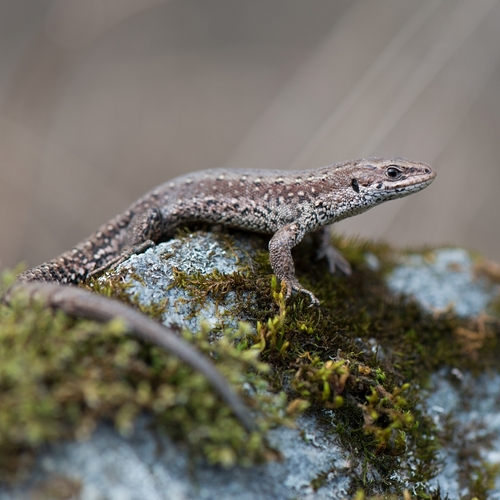
Common Lizard
The viviparous lizard, Zootoca vivipara, charms with its live-bearing trait and sun-loving nature. Thriving across diverse European and Asian landscapes, it plays a crucial role in controlling insect populations. Its vibrant agility and adaptability highlight its ecological significance.
5 years
Lifespan
Least Concern
Conservation Status
Unknown
Population Trend
Distribution Range of the Common Lizard
Zootoca vivipara, commonly known as the viviparous lizard or common lizard, is native to a broad range across Europe and Asia. It is found from the United Kingdom and Ireland in the west, across northern and central Europe, into Russia, and reaching eastern Siberia and the Korean Peninsula. Its range extends as far south as northern Italy and the Pyrenees in France.
Common Lizard's Habitat
Environmental Conditions
Zootoca vivipara typically inhabits environments with cool and temperate climates. It is predominantly found in a variety of terrestrial habitats, including heathlands, moorlands, and grasslands. This lizard is also common in forested areas, especially in clearings or edges where sunlight can penetrate.
Ecological Niche
The viviparous lizard occupies an ecological niche where it acts as both predator and prey. It feeds on a variety of small invertebrates, such as insects and spiders, playing a role in controlling these populations. As a prey species, it is an important food source for birds, mammals, and other reptiles. Zootoca vivipara is adaptable and has variations in habitat preference depending on regional climate and environmental conditions. It can also survive in altitudes up to 3,000 meters, especially in mountain regions.
Copyright @ Nature Style Limited. All Rights Reserved.
 English
English